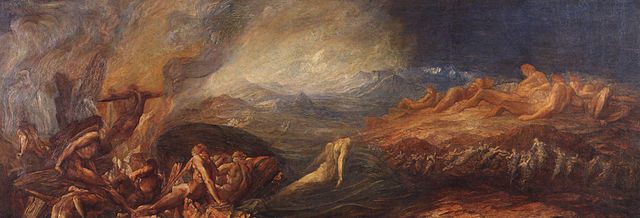
Image 1 Caption: A deluge (c.1517--c.1518) by Leonardo da Vinci (1452--1519).
Is this the creation from cosmongonic chaos?
Mythical Cosmology and Creation Myth
- All early
human societies,
yours truly supposes, had their own
mythical cosmologies.
- Most of these mythical cosmologies,
yours truly supposes---yours truly hasn't done an
actual count---have
anthropomorphic gods
that create the universe by ordering it up
or,
often it seems, by
biological generation---sexual reproduction
or from the body parts of
primordial gods or
monsters.
- But it still seems necessary for an origin in time
with earliest uncreated primordial gods who just were.
- However, it also seems in societies of some level of sophistication
that philosophy speculation
about the origin of
universe
leads to the idea of origin from primordial matter or entities without much personality.
This is true in Greek mythology
according to
Hesiod's (fl. 700 BCE)
Theogony (Origin of the Gods)
(see Hesiod's Theogony
translated by Hugh G. Evelyn-White 1914 and also
The Structure of
Hesiod's Theogony: Joe Farrell, University of Pennsylvania).
See, e.g., the discussion in
Cor-193,198--201,202--203.
- To expand a bit on
Theogony:
- First, Hesiod wrote
Theogony---it is NOT
a pure oral tradition
such as modern
anthropology has been able to collect
in the recent past though probably NOT for much longer if still possible at all.
Nevertheless, Hesiod was probably close to the pure oral tradition---but recall, there were probably many pure oral traditions and Hesiod selected and ordered those he liked to create a literary product.
-
Theogony gives the origin
of the
Greek gods
starting from
the Greek primordial gods who were
also the constituents of the
world/universe.

- Image 2 Caption: "Chaos" (c.1875) by George Frederic Watts (1817--1904) and assistants.
One can read "Chaos" as a juxtaposition of creation, the origin of consciousness, and consciousness contemplating universe.
- The Greek primordial gods:
- Chaos is the Ur-god or Ur-universe. The word Chaos in this context probably means nothingness or void. But to the ancient Greeks, it could also mean abyss, chasm, or yawn????. Chaos is only anthropomorphized to the extent that he/she gives birth to other slightly more anthropomorphized gods.
- Tartarus (the Abyss) (virtually the same as the Greek underworld and sometimes approximately Hell). Child of Chaos.
- Gaia (the Earth), the Greek mythology version of the Earth Goddess. Child of Chaos.
- Eros, who in Theogony is a child of Chaos.
- Uranus (the Sky). Child of Gaia.
- Then other useful Greek primordial gods followed from procreation (e.g., Erebus (Gloom), Nyx (Night), etc.) and then other Greek gods from procreation.
- The Greek primordial gods are initially just giant physical bodies or forces. Later on in Theogony some acquire personality at times while still being giant physical bodies or forces at times too. The later generations of Greek gods have a lot more personality---e.g., Zeus, Psamanthe, etc. For more on the geneology of the Greek gods, see Ancient Astronomy file: theogony.html.

- Image 3 Caption: "First [proton (p+)]-[lead (Pb) ion] particle collision at the Large Hadron Collider (LHC)." (Somewhat edited.)
An image which serves as a symbol of creation as understood in modern physics.
- At first glance, Theogony posits creation as procreation starting from nothingness (i.e., Chaos). In other words, cosmology is seen as a kind of biology.
However, the early stages of procreation in Theogony can also be interpreted as a physics-like evolution. We can see Theogony as a step toward the philosophical physics and cosmology of the Presocratic philosophers. See, e.g., the discussion in Cor-198--201.
- Image 2 Caption: "Chaos" (c.1875) by George Frederic Watts (1817--1904) and assistants.
- First, Hesiod wrote
Theogony---it is NOT
a pure oral tradition
such as modern
anthropology has been able to collect
in the recent past though probably NOT for much longer if still possible at all.
-
Images:
- Credit/Permission:
Leonardo da Vinci (1452--1519),
c.1517--c.1518,
(uploaded to Wikimedia Commons
by User:DcoetzeeBot,
2012) /
Public domain.
Image link: Wikimedia Commons: File:Leonardo da Vinci - A deluge - Google Art Project.jpg.
- Credit/Permission:
George Frederic Watts (1817--1904)
and assistants,
circa 1875
(uploaded to Wikimedia Commons
by User:DcoetzeeBot,
2011) /
Public domain.
Image link: Wikimedia Commons: File:Assistants and George Frederic Watts - Chaos - Google Art Project.jpg.
- Credit/Permission:
©
Peter Jenni (1948--)
(see also
Peter Jenni (1948--) (AKA User:Pcharito),
2014 /
CC BY-SA 3.0.
Image link: Wikimedia Commons: File:Ev059HR 3D.png.
File: Art_l file: leonardo_da_vinci_deluge_creation.html.